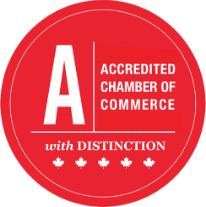“Ontario business have repeatedly expressed their concerns about inconsistent and unclear public health guidelines that trigger a region’s shutdown, insufficient testing and tracing capacity, and lack of data on the sources of community spread. Along with the Ontario Vaccination Support Council, we call on all levels of government to work together to vaccinate Ontarians, so we can fully reopen businesses, bring people back to work, and get the economy moving.”
– Rocco Rossi, President & CEO, Ontario Chamber of Commerce
Need for a Responsible Business Protocol for reopening
There is no easy on or off switch for employers. And, the lack of predictability and clarity in government decisions makes it difficult for businesses to plan effectively and invest in the necessary infrastructure for a safe re-opening.
Once this current lockdown is over, the Milton Chamber believes the government should establish a Responsible Business Protocol. The current framework can be confusing and unfair. It is often referred to as a blunt tool because of it having geographic restrictions and does not fully address the bigger spread issue – community contact reduction.
Our Chamber has joined with the Chambers and Boards of Trade in Brampton, Peterborough, Thunder Bay, Barrie, Ottawa and Sudbury in proposing this framework to Premier Ford and his government.
We believe this Responsible Business Protocol refines the current colour-code system, calls for better definitions of safe operating protocols by sector, and recommends adding a community contact reduction framework to better address pandemic spread.
Most importantly, the recommended responsible Business Protocol puts the onus on businesses to adhere to a common safe operating framework which allows them to remain open.
It includes the following elements:
- A Safe Operating Framework (by business sector) – The framework should advise business owners on operating guidelines for their establishment (restaurant/hair salon/gym, etc.) in order to protect their staff and clients from COVID-19 exposure.
- Example/Idea: In a barber shop, consistent operating safety protocols (i.e.. spacing of chairs/plexi-dividers) can be established and all businesses would then be treated equitably. The capacity at which they would be allowed to operate is guided by the Community Contact Reduction Framework described in point #2.
- Once a safe operating framework has been established by Ontario for each sector, the safety measures for each business should not vary based on what product you sell, geographic area or establishment size, etc.
- A Community Contact Reduction Framework (based on regional virus spread). As the cases rise in a particular region, the government should enforce reduction in community contacts. We know it is not the business itself that becomes less safe, it is the contact between community members that is less safe.
As such, we recommend that the new protocol establishes a framework that identifies how individual contacts must be reduced and outlines capacity restrictions, across the board, for public-facing businesses. This sends a message to Ontarians that these operating restrictions are about the community’s actions to reduce their own contacts rather than the current messaging, which unfairly closes or restricts trade for small businesses.
-
- Example/Idea: In the Green level, for example, all public facing businesses would operate at 100% customer capacity (because they are already implementing safe operating protocols as per point #1) and as the case level rises in that region, capacity is reduced by 15-20% (for example, yellow = 80%, Orange = 60%, Red = 40%, Grey (current) = 25%). This allows more businesses to stay open and changes the message to the community.




